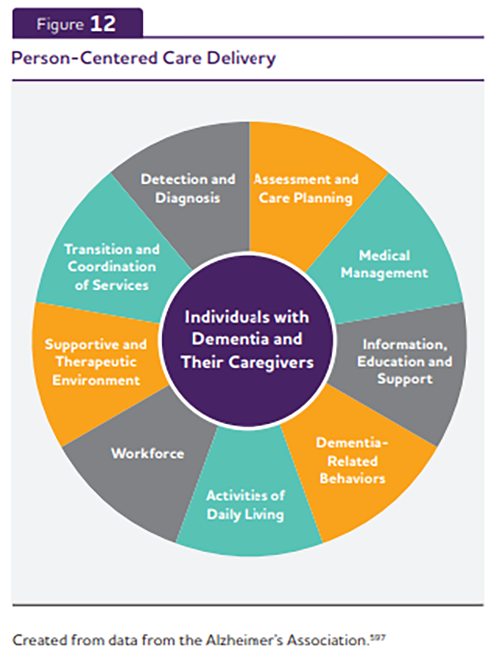
Memory care lead generation takes on renewed urgency for census recovery. It is important that memory care communities use the right branding and marketing tools to fit their target population.
It is interesting to note that memory care for ADRD residents is associated with reduced rates of long-term care placement compared to general assisted living facilities, according to a study published by faculty at Brown University, Harvard Medical School and others. This is one important differentiator to incorporate into your memory care marketing.
Where is your best marketing ROI for memory care lead generation? It should be a combination of digital strategies and traditional marketing to reach the widest target audience. This audience includes potential residents as well as their caregivers.
1. Follow Memory Care Trends
 A special report by the Alzheimer’s Association offered a glimpse into new treatments, services and caregiver support that will include direct health care providers as strategic partners. A section on caregiving trends noted that there will be an impending “family care gap” with fewer unpaid family or other caregivers available. At the same time, the industry calls for 1.2 million additional direct care workers between 2020 and 2030.
A special report by the Alzheimer’s Association offered a glimpse into new treatments, services and caregiver support that will include direct health care providers as strategic partners. A section on caregiving trends noted that there will be an impending “family care gap” with fewer unpaid family or other caregivers available. At the same time, the industry calls for 1.2 million additional direct care workers between 2020 and 2030.
How can these statistics and others support your memory care marketing? Think about messaging for caregivers that supports their wellbeing and reduces their stress. Also, include brand messaging about resident wellbeing in memory care facilities, including the potential for reduced incidence of illness or hospitalization.
ONE TIP: Create a web landing page that shares the benefits of memory care…with statistics and testimonials by residents and caregivers to back up your messaging.
2. Event Marketing
Hosting or sponsoring events, such as educational seminars or support groups for caregivers, can be a way to connect with potential clients and generate memory care leads.
Pair up with providers in your area to offer a webinar or caregiver expo that helps people understand the signs of dementia as well as new treatments and services available. Attendees will remember your community as a caring resource when it’s time to choose a memory care facility.
ONE TIP: If you can segment events to support spouses or partners of potential residents, clinical care providers and individuals who are in the early stages of memory loss, it can help you build diverse contact lists for personalizing your memory care communications.
3. Referral Marketing for Senior Living
Health care providers are among the first to identify a future Alzheimer’s or dementia patient who will need additional memory care services or housing. Partnering with healthcare providers in your community can help you understand the dynamics of home health care or unpaid caregiving that is already happening and the needs they have.
If you generate professional referrals, the next important step in your marketing is to develop a plan for meeting with and assisting potential residents and caregivers to make the best choice for them. This may include referrals to financial advisors, transitional health care resources, recreation or adult day programs and more. Make the journey seem less arduous early in their diagnosis.
ANOTHER TIP: Use your strategic outside advisors as part of your marketing or advisory committee. You can cross-refer services and check in with them on medical advancements and caregiving trends.
4. Digital Ads and Social Media
Following a diagnosis, one of the first things that residents and family members will do is go online to research symptoms, treatments and resources. Your memory care facility can run targeted digital ads through Google or social media to bring these prospects to your website and answer their questions.
To nurture prospects, create an informational ad campaign focused on your insights and amenities rather than strictly advertising about your community. You want to position your community as a resource for future residents and their families.
FINAL TIP: Develop a community on your social media channels by responding to questions quickly, sharing comforting stories and highlighting new ideas. When it’s time for families to consider memory care, your community will already be a familiar and trusted resource.





